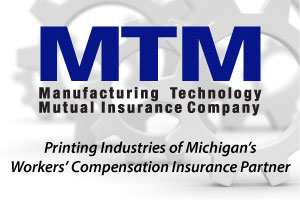with Some Baseline Metrics
By Stuart W. Margolis, CPA, MT

Year-end is a great time to capture metrics on the past twelve months and make sensible projection for the next twelve. As you start the process, evaluate Break Even. Break Even Analysis is a fundamental and important criterion for management to use in formulating overall business strategies for selling printed product, establishing work shift production benchmarks and evaluating success in various other areas of the company.
Performing Break-Even Analysis Can Help to:
- Determine price levels
- Analyze sales needs and goals
- Estimate whether or not an expansion project or cost-saving project makes sense
- And more
Break-Even Analysis
The goal of a Break-Even Analysis is to determine when sales and revenue equals total expenses. Beneath the surface, the real value of this analysis lies in helping managers break down the components of the equation to determine the relationship between revenue, fixed costs and variable costs. In essence, management should use it to determine answers to questions like:
- “Has our press purchase paid off?”
- “Are we covering costs at our current pricing levels?”
- “Did our company “break-even” on that big job requiring so many outside services?”
- “How much printing needs to be sold and produced so all of our expenses are covered?” Changing one component of the break-even analysis changes the results and allows managers to explore various potential scenarios to make better decisions and forecasts.
Changing one component of the break-even analysis changes the results and allows managers to explore various potential scenarios to make better decisions and forecasts.
Pricing Decision Break-Even Analysis
| Scenario: Here’s a snapshot of a company | The Variable Costs for the month based on $910,000 in sales looked like this: |
 |
 |
Sales for the Month were $910,000
Fixed expenses (overhead) were $535,000
Variable expenses were $405,000
Did we break-even?
In this Scenario Break-Even looks like this:
Sales = Fixed costs + variable costs
$940,000 = $535,000 + $405,000
$910,000 is less than $940,000
So according to our figures, with sales of $910,000, we lost $30,000 this month! How did that happen?
Let’s find out.
Cost Analysis-Evaluate the Components of the Equation
To find out what went wrong, we need to take a careful look at the equation, break it down, taking a careful look at costs and pricing.
For this example, let’s assume Fixed Costs or Overhead are tight and controlled.
To perform an analysis of costs we turn to the PIA Ratios.
Upon research we find that our companies Variable Costs as a % of Sales are high compared to Industry Profit Leaders in The Ratios.
Here’s the facts:
 While taking a closer look at the components of Break-Even, we determine that our Variable Costs seem to be about 3% higher than the Variable Costs of Profit Leaders. If we can control those costs, will we break-even? Three percent (3%) seems like a small amount, but as a % of sales it adds up. To bring Variable Sales down to 41% of sales, here’s the equation:
While taking a closer look at the components of Break-Even, we determine that our Variable Costs seem to be about 3% higher than the Variable Costs of Profit Leaders. If we can control those costs, will we break-even? Three percent (3%) seems like a small amount, but as a % of sales it adds up. To bring Variable Sales down to 41% of sales, here’s the equation:
41% of $910,000
$910,000 x 0.41 = $373,000
Meaning Variable Costs need to be reduced by $32,000. Suddenly, that 3% is a lot.
- Can we shave $20,000 off outside services by doing more work inside and not sending it out?
- Can we reduce Factory Expenses by $10,000 by focusing on better purchasing and tighter usage?
- In many cases, the answer is “no, not really”. So in this scenario, the question becomes– What type of jobs can we do that do not require the use of outside services and this high level of Factory Expense?
- In other words, what kinds of jobs do we need sell to actually break-even and maybe even make money!
The answer might lie within and might surprise you. Take a look at your past monthly performance.
- In months when Break-Even was achieved, how did your ratios stack up to the Industry Profit Leader Performance?
- What was different in those months?
- Were particular Cost Components still out of line? If not, what did you do to achieve good ratios?
- Can good ratios be achieved in future months? If not, it might be a good time to look at those costs carefully and find solutions. We call it “Right Sizing”.
Unraveling costs and analyzing components can become a monumental task, especially when budgets are already tight. If it becomes too time consuming, get help.
About the Author: Margolis Partners has long been recognized as the financial expert for family- owned businesses with a specialty in the printing, packaging and allied graphic communications industries, assisting thousands of companies with strategic and financial management, valuation, mergers/acquisitions, accounting, audit and tax services. The firm is noted for its expertise in enabling companies to optimize profits. Proudly, it is the purveyor of the industry’s Value-Added Principles of Management, and compiles the annual Printing Industries of America Ratios, the printing industry’s premier financial benchmarking tool.







